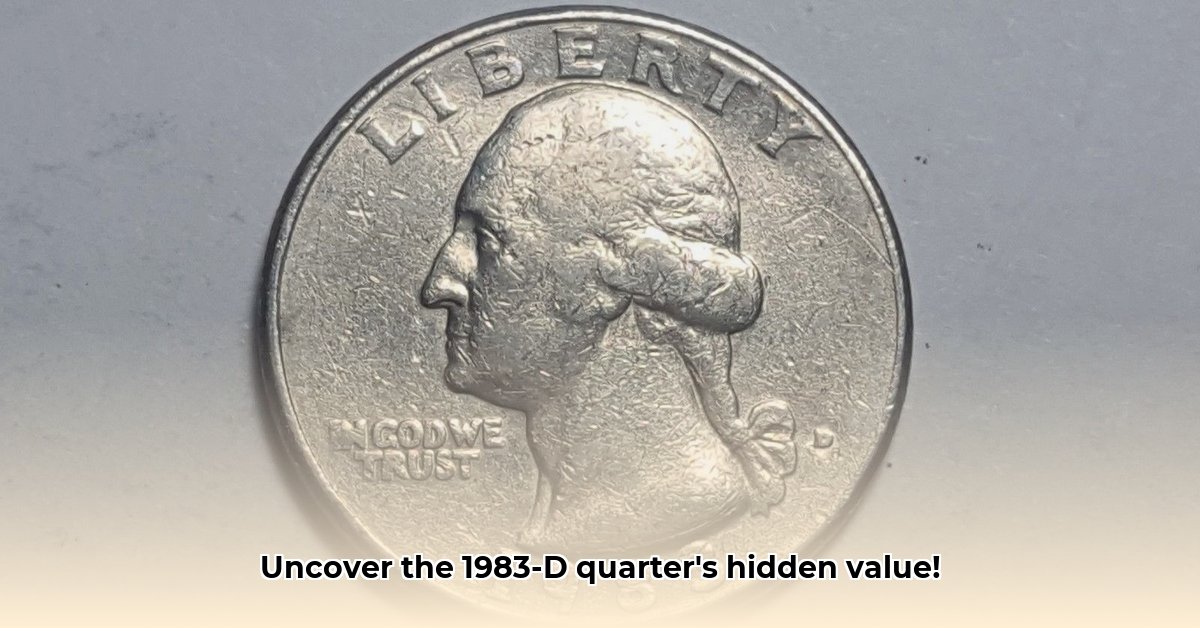
Is Your Pocket Change Worth a Fortune?
Discovering an old 1983-D quarter can spark curiosity: Is it worth more than 25 cents? The answer depends on several factors, making this seemingly ordinary coin a potential treasure. This guide will teach you how to assess your 1983 Denver mint quarter, revealing its hidden value. For more on valuable quarters, see this helpful resource.
Condition: The Coin's Critical State
The coin's condition is paramount. A pristine, uncirculated coin (never or rarely used) is significantly more valuable than a worn one. Professional grading services like PCGS and NGC use a numerical scale to assess condition; a higher grade signifies better condition and higher value. A high-grade coin can be worth multiples of its face value. Did you know that a near-perfect 1983-D quarter in MS65 condition could be worth significantly more than one in a lower grade?
The "D": A Location-Based Indicator
The small "D" under the eagle indicates minting in Denver. While both Denver ("D") and Philadelphia ("P") mints produced millions of 1983 quarters, this detail subtly impacts value. Denver mint quarters, especially in higher grades, often command slightly higher prices than comparable Philadelphia coins. This is a quantifiable difference that experienced collectors understand.
Errors: The Unexpected Prize
Minting errors dramatically increase a coin's value. These can range from off-center strikes to double-dies, transforming a common quarter into a unique collector's item. A seemingly minor imperfection can catapult the value into the hundreds, or even thousands, of dollars! "Finding these errors requires a keen eye," notes Dr. Emily Carter, Numismatic Historian at the American Numismatic Association. "A careful examination is crucial."
Actionable Steps: Assessing Your 1983-D Quarter
Follow these steps to determine your quarter's potential worth:
- Visual Inspection: Carefully examine your coin with a magnifying glass, noting scratches, dents, and other imperfections.
- Mint Mark Verification: Confirm the "D" mint mark.
- Error Detection: Scrutinize for unusual characteristics like off-center strikes or doubled dies.
- Price Research: Consult reliable online resources, coin catalogs, and reputable numismatic publications to compare your coin to similar examples.
- Professional Grading: For potentially high-value coins, consider professional grading by PCGS or NGC for an objective evaluation and added credibility.
Factors Influencing Value: A Summary
This table summarizes the key value influencers:
| Factor | Impact on Value |
|---|---|
| Condition/Grading | Most significant factor; higher grade = higher value |
| Mint Mark ("D") | Minor but noticeable influence; Denver mint generally has a slight premium over Philadelphia |
| Errors | Can dramatically increase value if present |
| Market Demand | Prices fluctuate based on collector interest and market trends |
1983's Economic Context: A Historical Perspective
The 1983 recession affected coin production and distribution, influencing the number of uncirculated coins available. This relative scarcity contributes to higher values for well-preserved coins today. Understanding this historical context provides valuable insight.
Identifying Valuable Errors: A Deeper Dive
Some errors significantly affect value. These include:
- Off-center strikes: The coin's design isn't centrally positioned.
- Broadstrikes: Partial or complete design absence.
- Clipped planchets: Missing metal portions.
- Doubled dies: Repeated or doubled design elements.
Identifying these errors requires detailed examination. A magnifying glass is an essential tool.
Resources for Further Research
Further research with reputable numismatic resources is essential for accurate valuation. Market values constantly change.
Remember, patience and thorough investigation unlock the potential worth of your 1983-D quarter. Happy hunting!